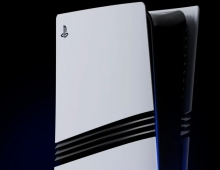
Sony to Launch New Ultra-thin OLED TV
Sony will launch an ultra-thin (3mm) flat TV based on the organic light-emitting diode (OLED) technology on December 1 in Japan, bringing a new contender to a $82 billion market dominated by LCD and plasma TVs.
The new "XEL-1" will be the world's first OLED TV, the company said on Monday.
 Sony, the world's No.2 liquid crystal display (LCD) TV maker behind Samsung, expects the 11-inch OLED TV with a thickness of 3 mm to sell for 200,000 yen ($1,740). The new panel has a resolution of 960?540 p its weigh is 2kg, power consumption is 45W and its external size is 287x140x253 mm (W x D x H). The maximum supported contrast ratio is 1,000,000:1.
Sony, the world's No.2 liquid crystal display (LCD) TV maker behind Samsung, expects the 11-inch OLED TV with a thickness of 3 mm to sell for 200,000 yen ($1,740). The new panel has a resolution of 960?540 p its weigh is 2kg, power consumption is 45W and its external size is 287x140x253 mm (W x D x H). The maximum supported contrast ratio is 1,000,000:1.
OLED is a light-emitting display technology based on electroluminescent organic materials. OLED panels are energy efficient, make thin and light displays, offer crisp pictures and have strength in showing fast-moving images, suitable for watching sports events.
But it is technologically difficult at the moment to make larger panels, limiting the appeal of the otherwise promising next-generation television. However, Sony believes that the new display has an expected product life of only 30,000 hours, less than half those of existing LCD peers.
"I don't think OLED TVs will replace LCD TVs overnight. But I do believe this is a type of technology with very high potential, something that will come after LCD TVs," Sony Executive Deputy President Katsumi Ihara told a news conference.
Ihara said he set the 200,000 yen price tag without taking profitability into consideration, suggesting Sony will make a loss for each set it sells at least in the initial stage.
Monthly production will come to 2,000 units. In comparison, Sony plans to sell 10 million units of LCD TVs in the year to next March.
 Sony, the world's No.2 liquid crystal display (LCD) TV maker behind Samsung, expects the 11-inch OLED TV with a thickness of 3 mm to sell for 200,000 yen ($1,740). The new panel has a resolution of 960?540 p its weigh is 2kg, power consumption is 45W and its external size is 287x140x253 mm (W x D x H). The maximum supported contrast ratio is 1,000,000:1.
Sony, the world's No.2 liquid crystal display (LCD) TV maker behind Samsung, expects the 11-inch OLED TV with a thickness of 3 mm to sell for 200,000 yen ($1,740). The new panel has a resolution of 960?540 p its weigh is 2kg, power consumption is 45W and its external size is 287x140x253 mm (W x D x H). The maximum supported contrast ratio is 1,000,000:1.
OLED is a light-emitting display technology based on electroluminescent organic materials. OLED panels are energy efficient, make thin and light displays, offer crisp pictures and have strength in showing fast-moving images, suitable for watching sports events.
But it is technologically difficult at the moment to make larger panels, limiting the appeal of the otherwise promising next-generation television. However, Sony believes that the new display has an expected product life of only 30,000 hours, less than half those of existing LCD peers.
"I don't think OLED TVs will replace LCD TVs overnight. But I do believe this is a type of technology with very high potential, something that will come after LCD TVs," Sony Executive Deputy President Katsumi Ihara told a news conference.
Ihara said he set the 200,000 yen price tag without taking profitability into consideration, suggesting Sony will make a loss for each set it sells at least in the initial stage.
Monthly production will come to 2,000 units. In comparison, Sony plans to sell 10 million units of LCD TVs in the year to next March.





















